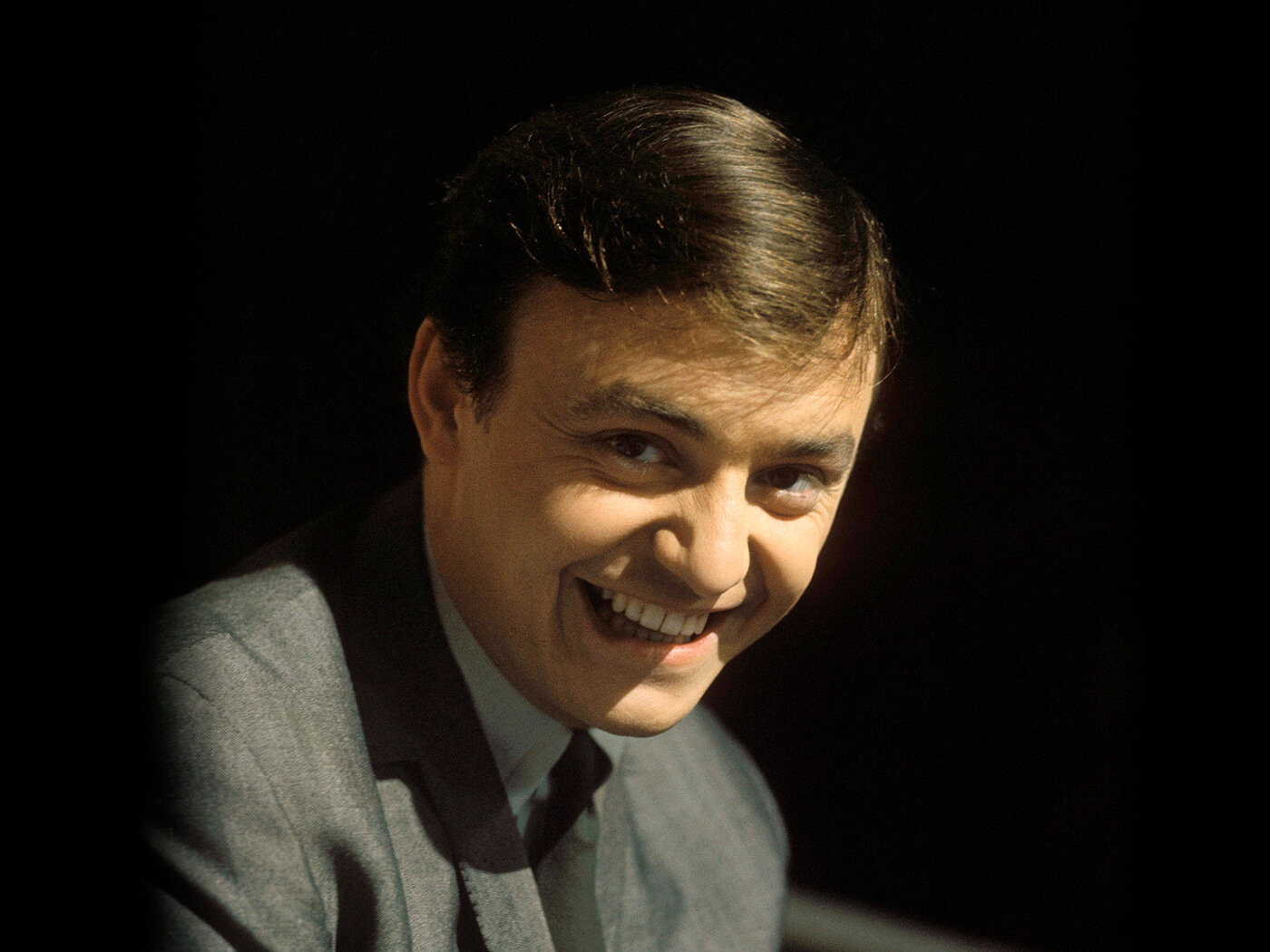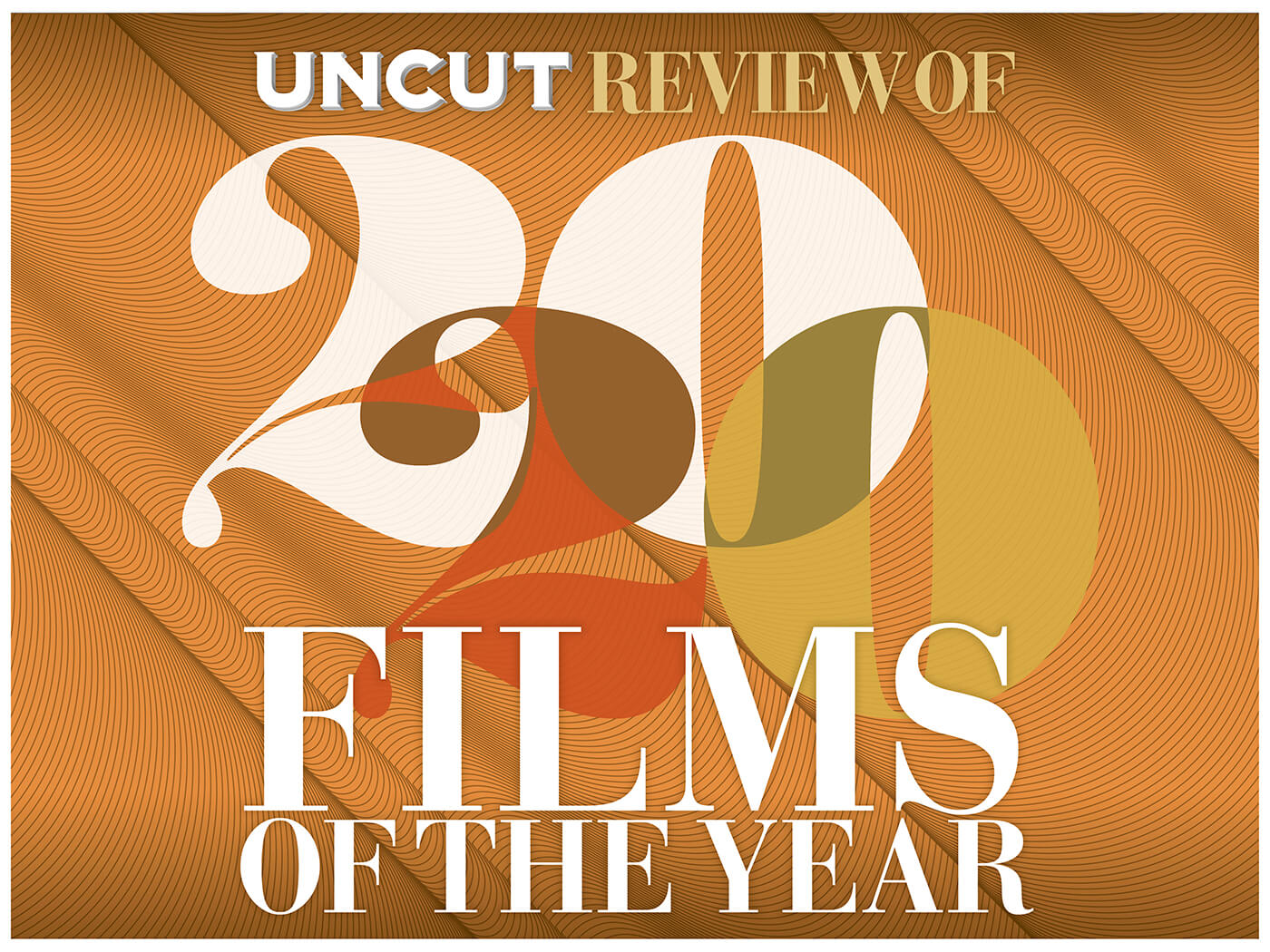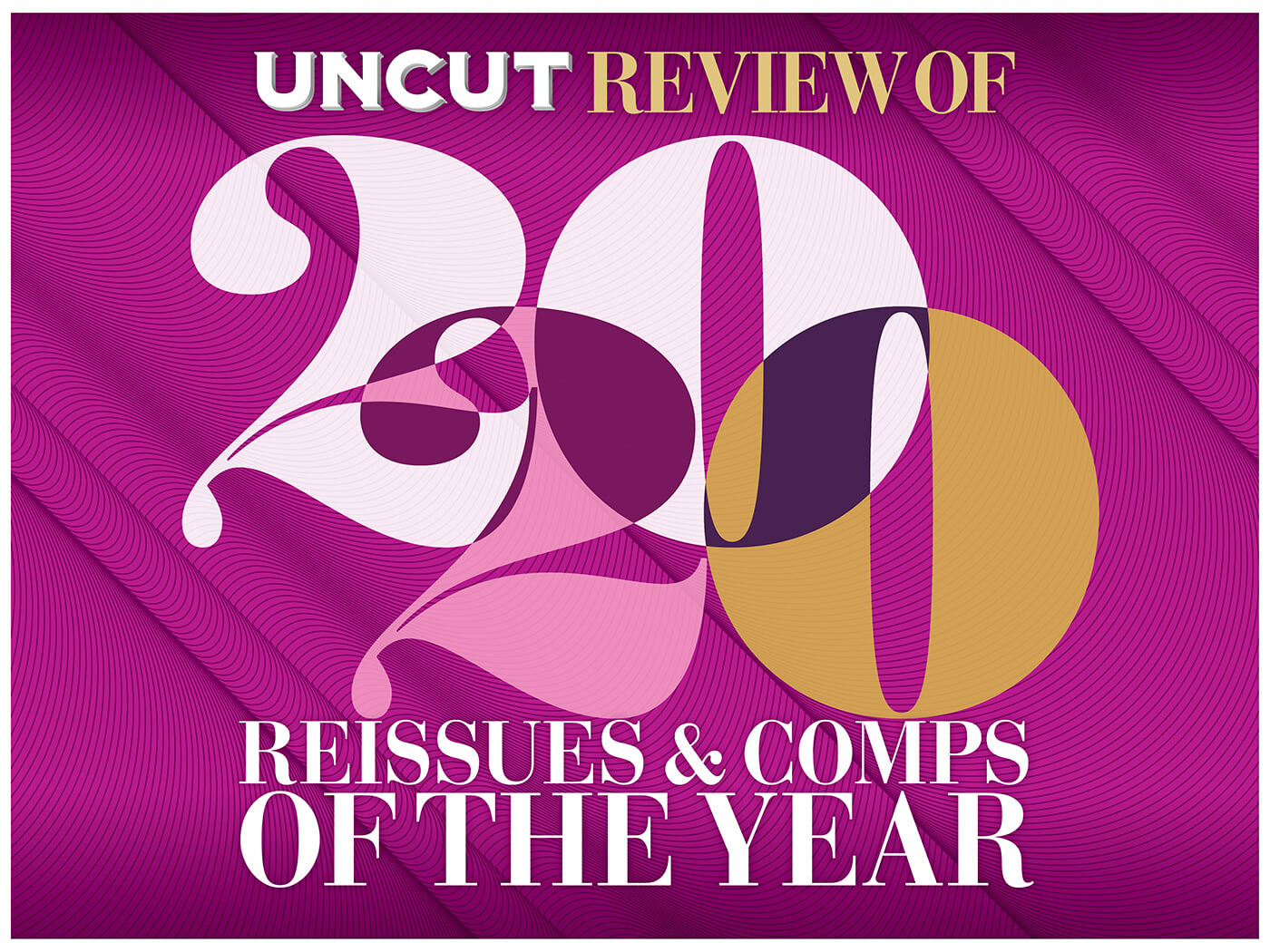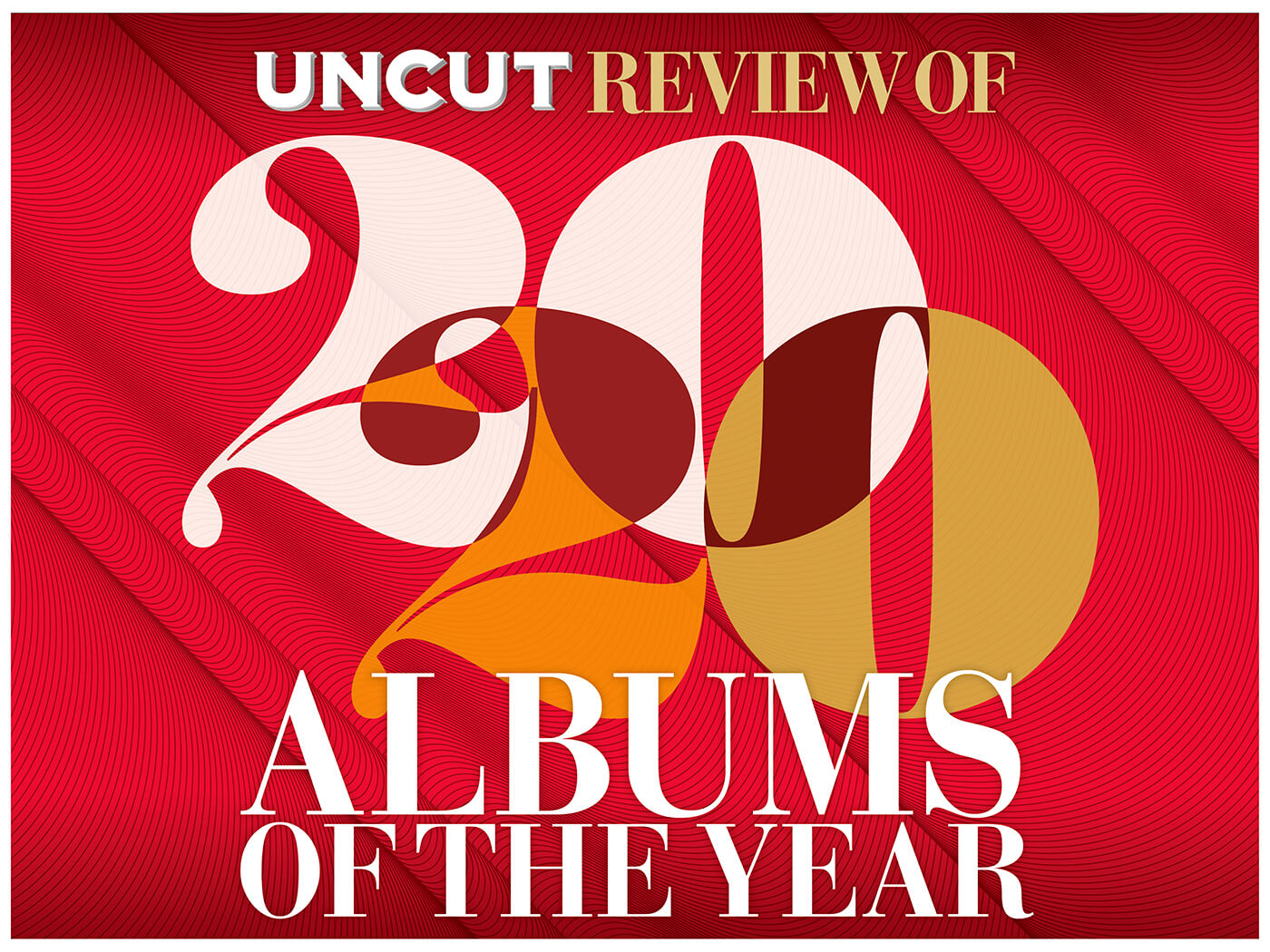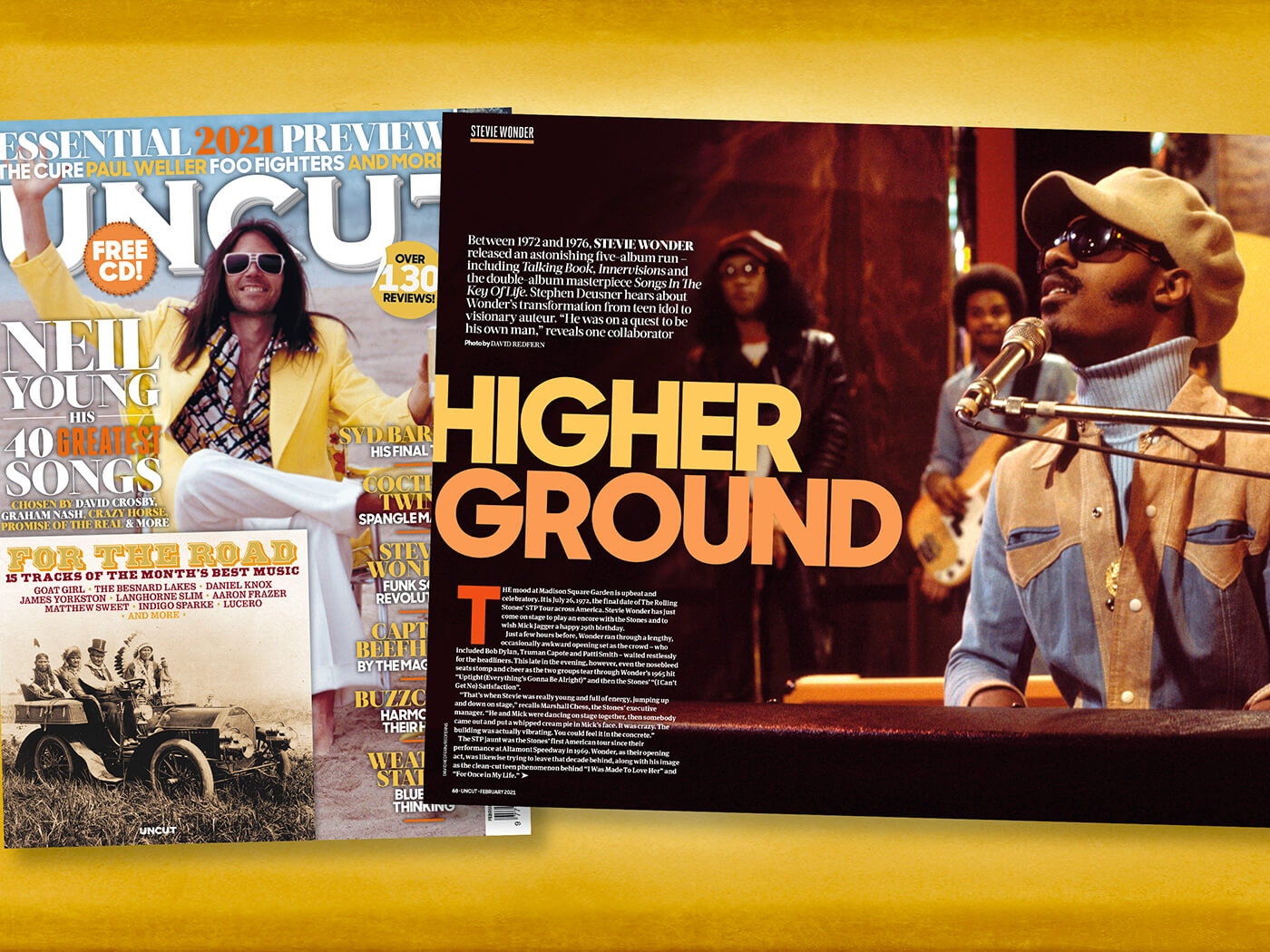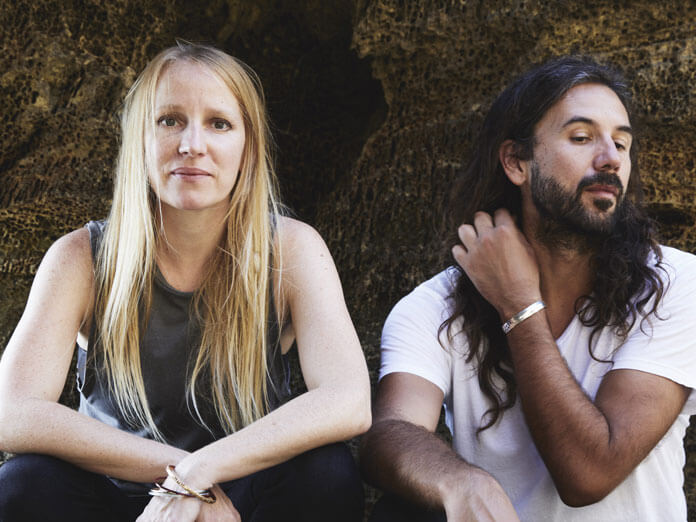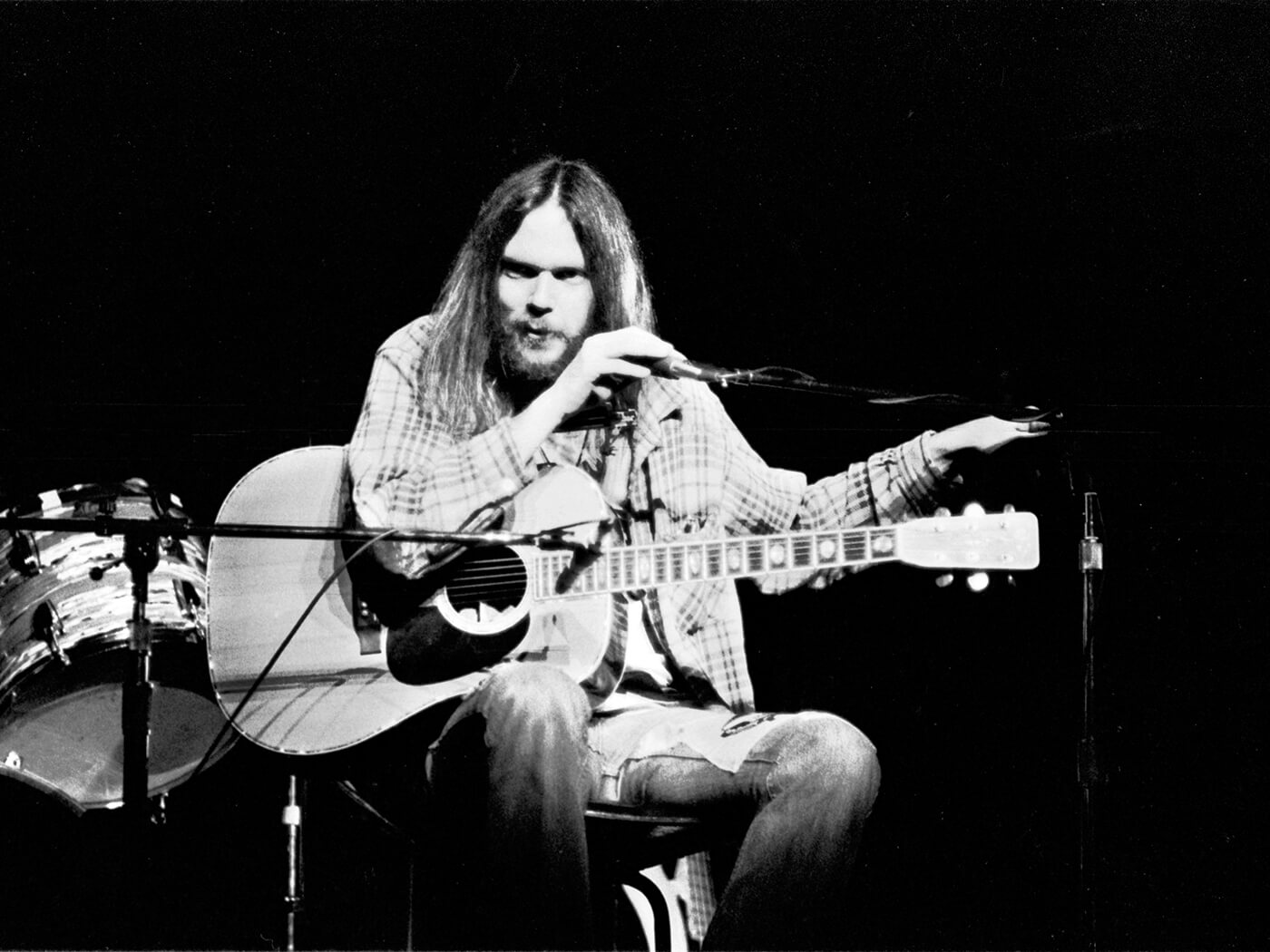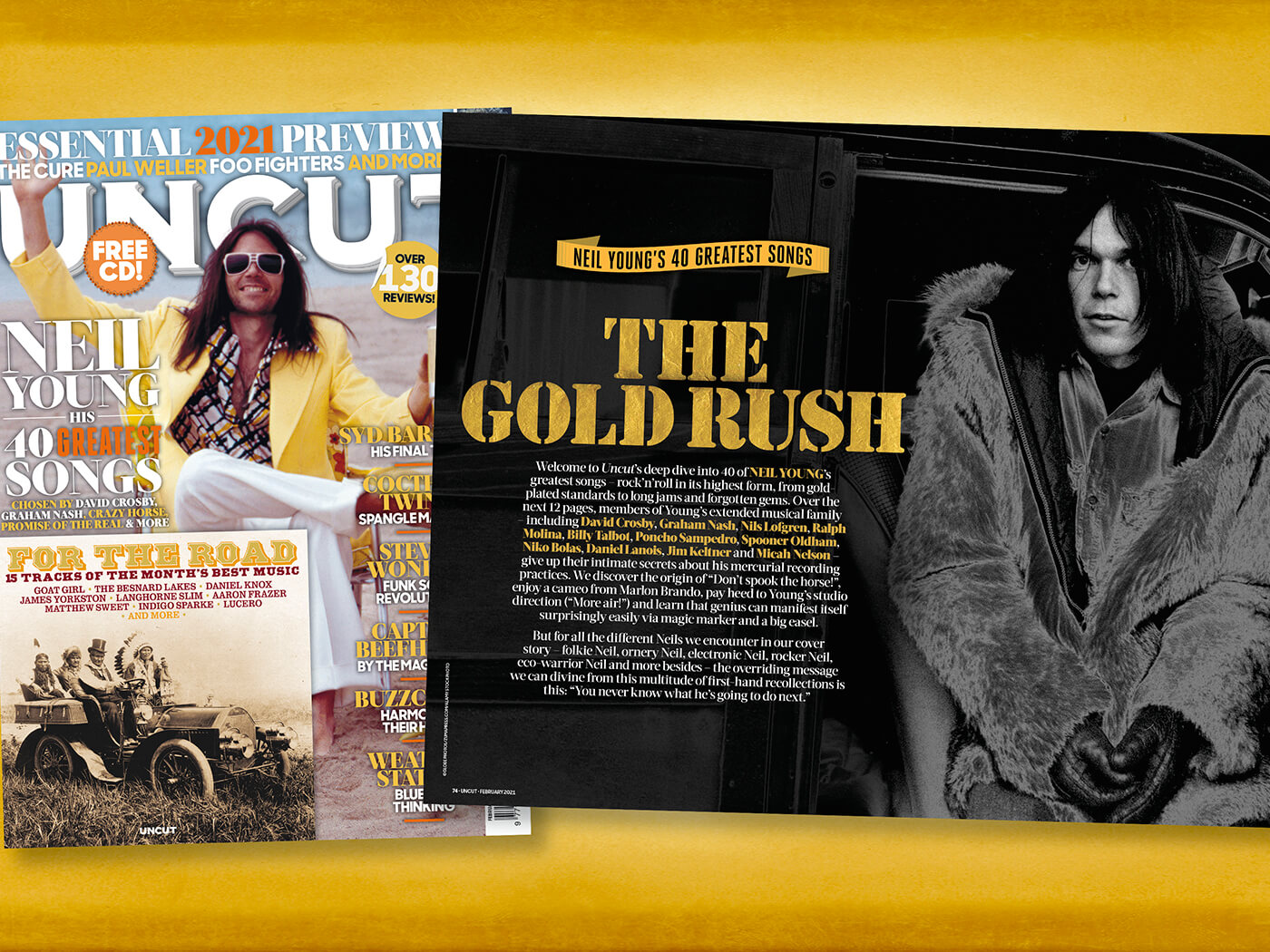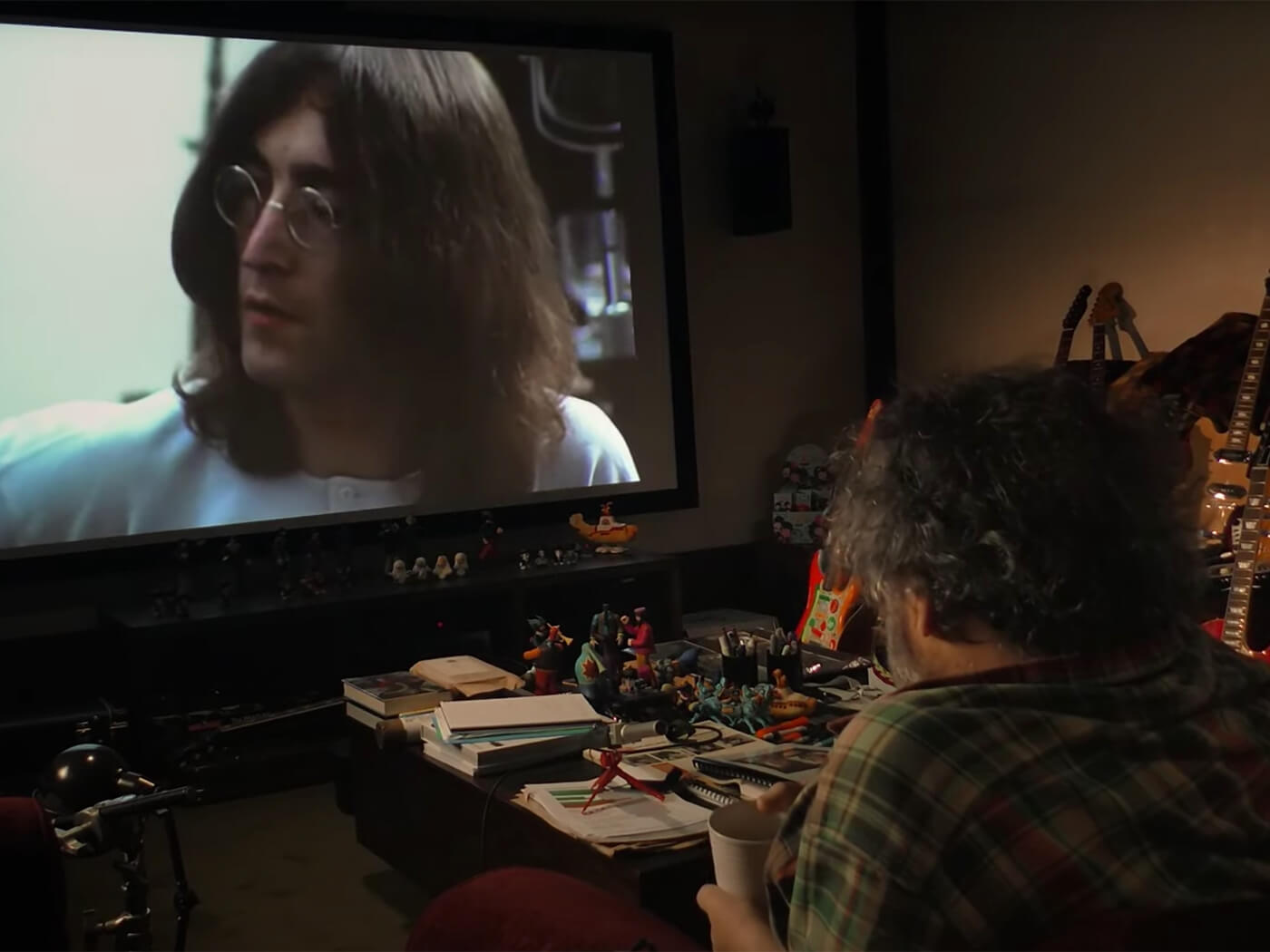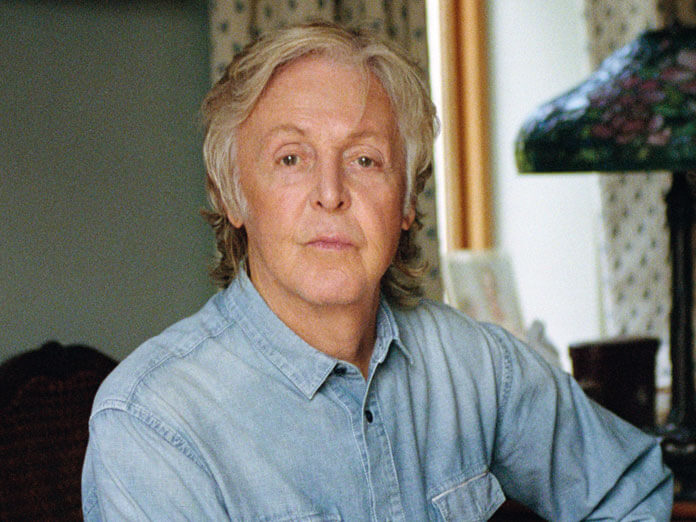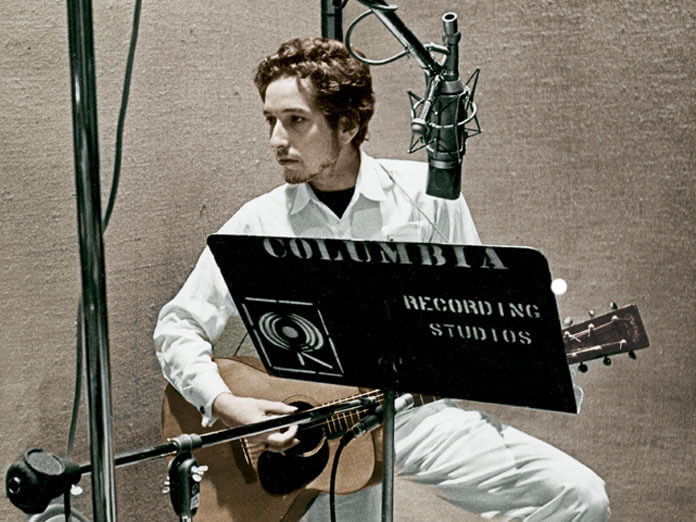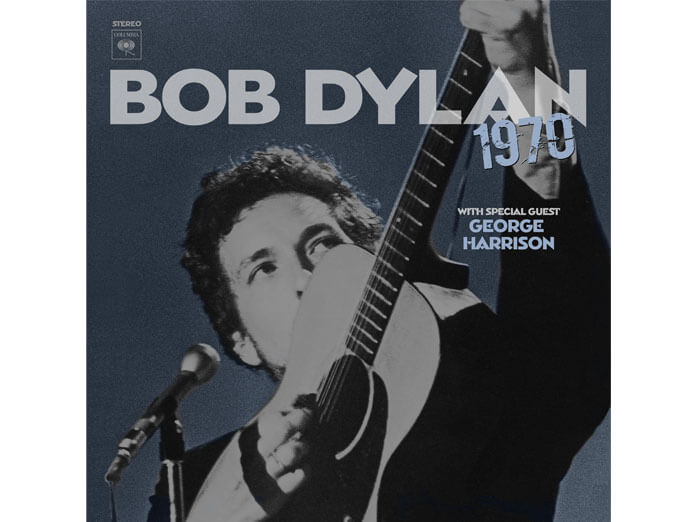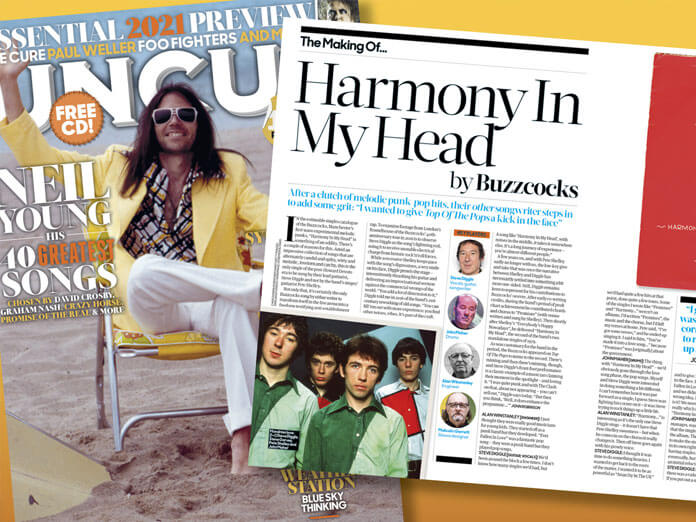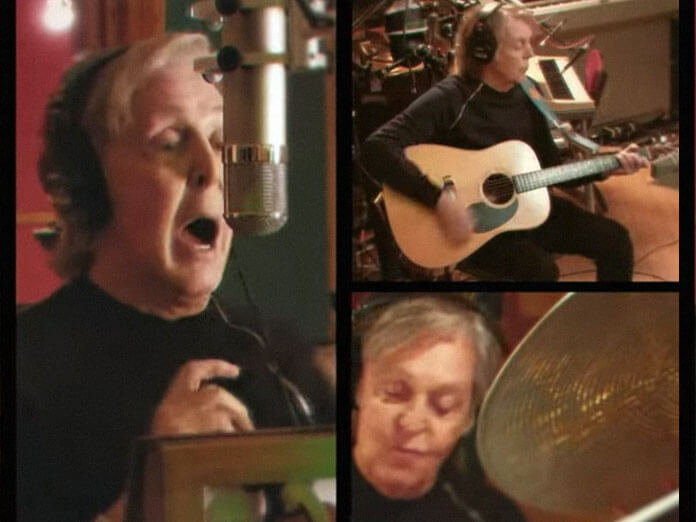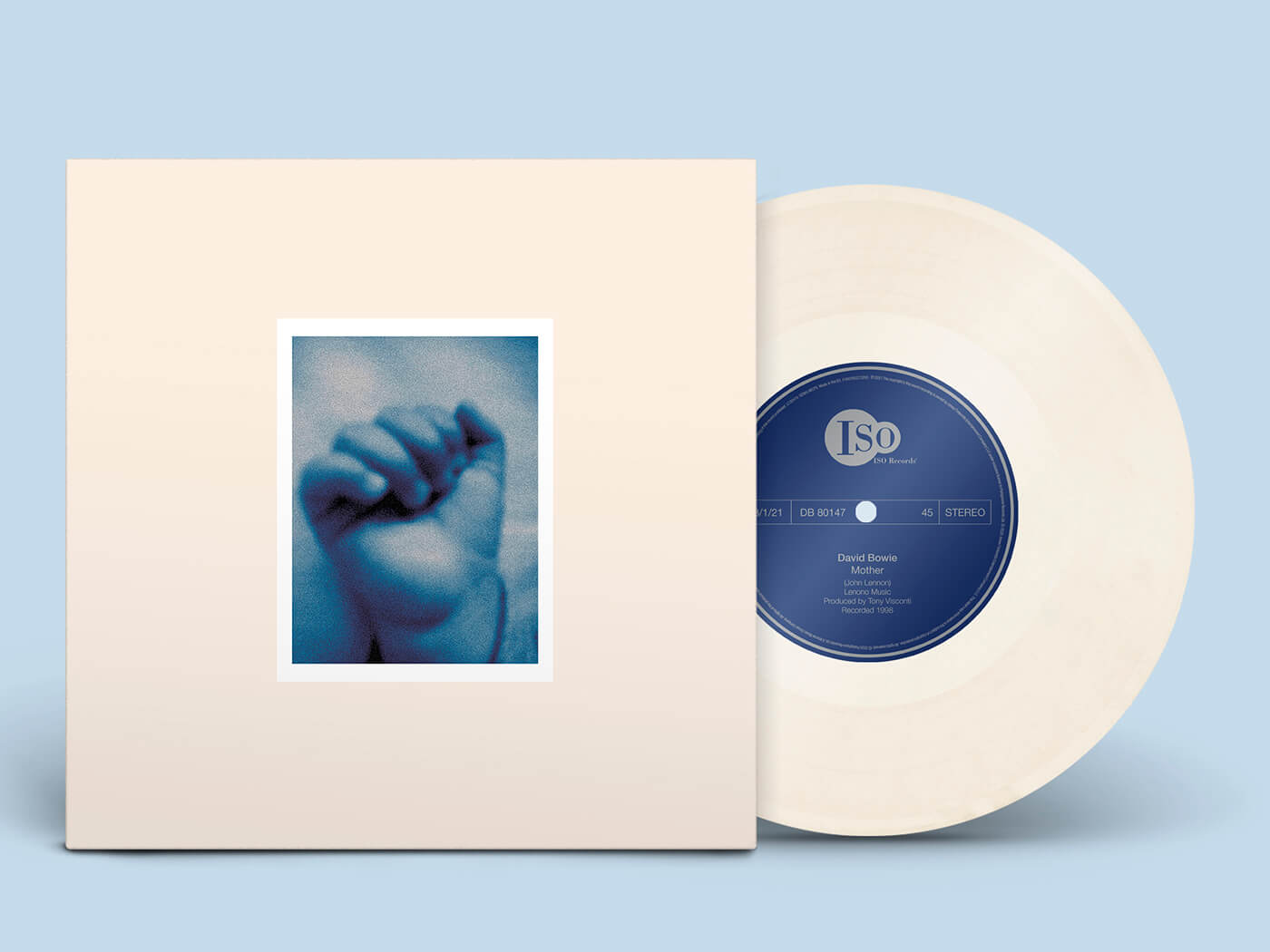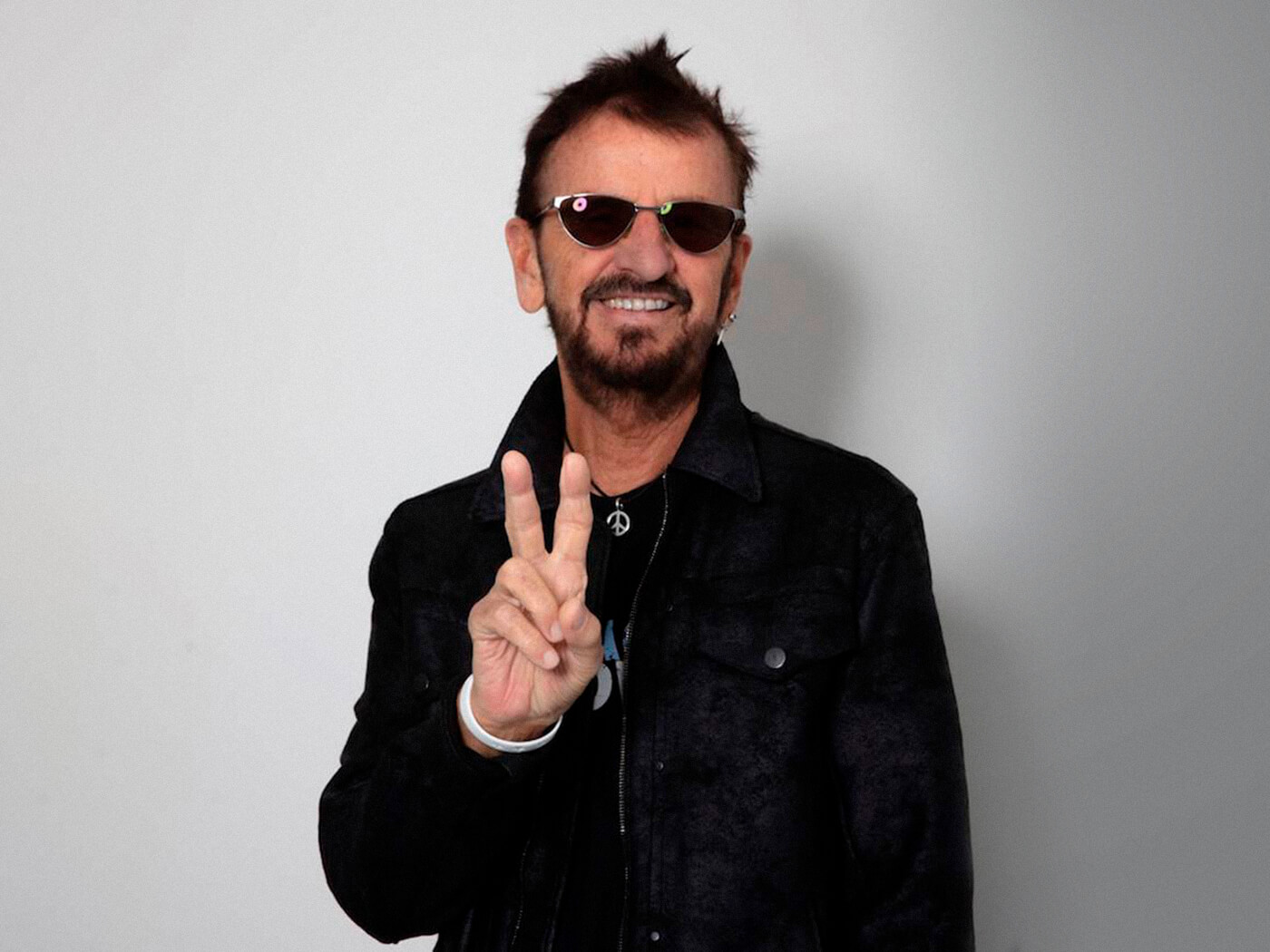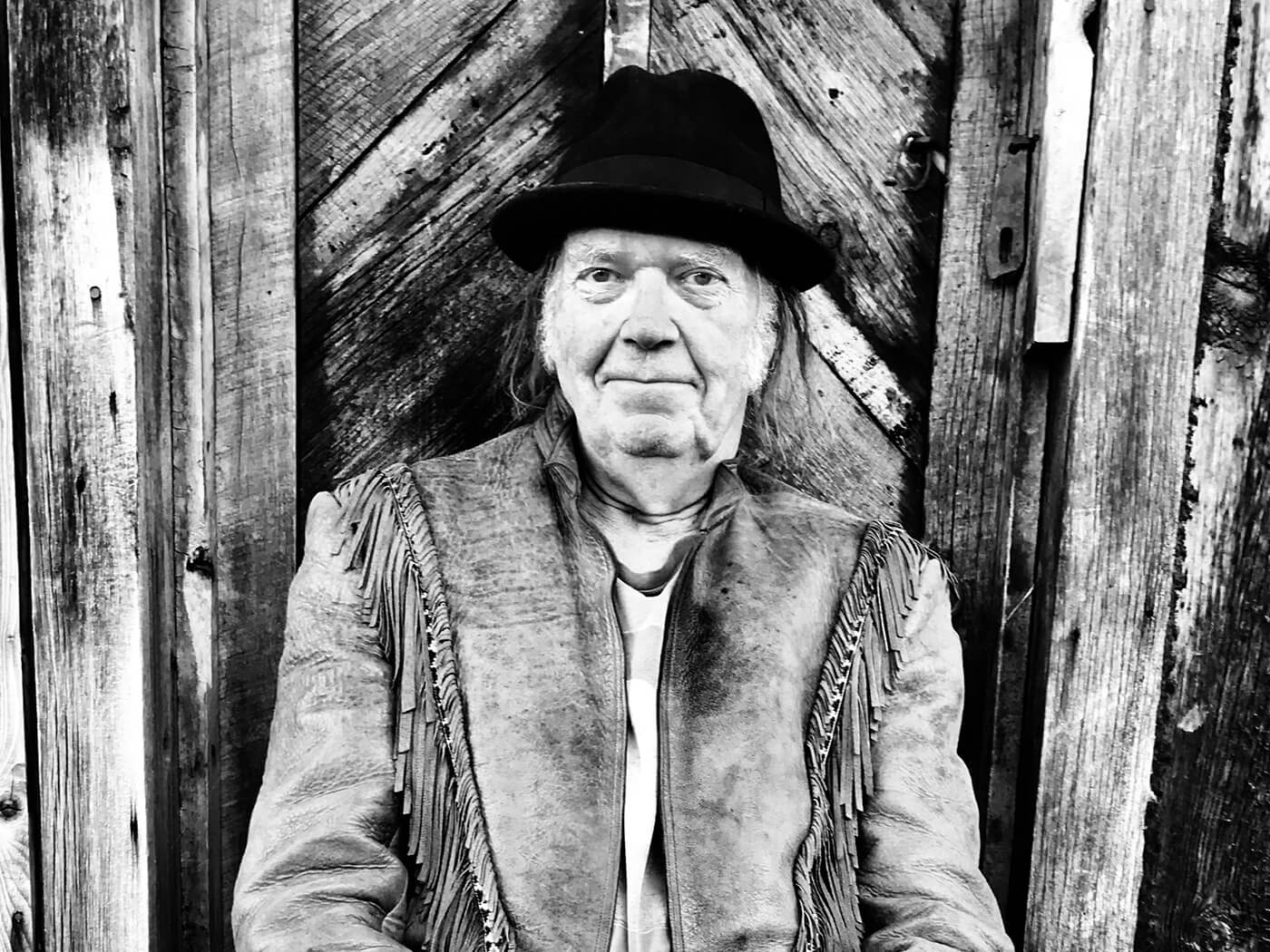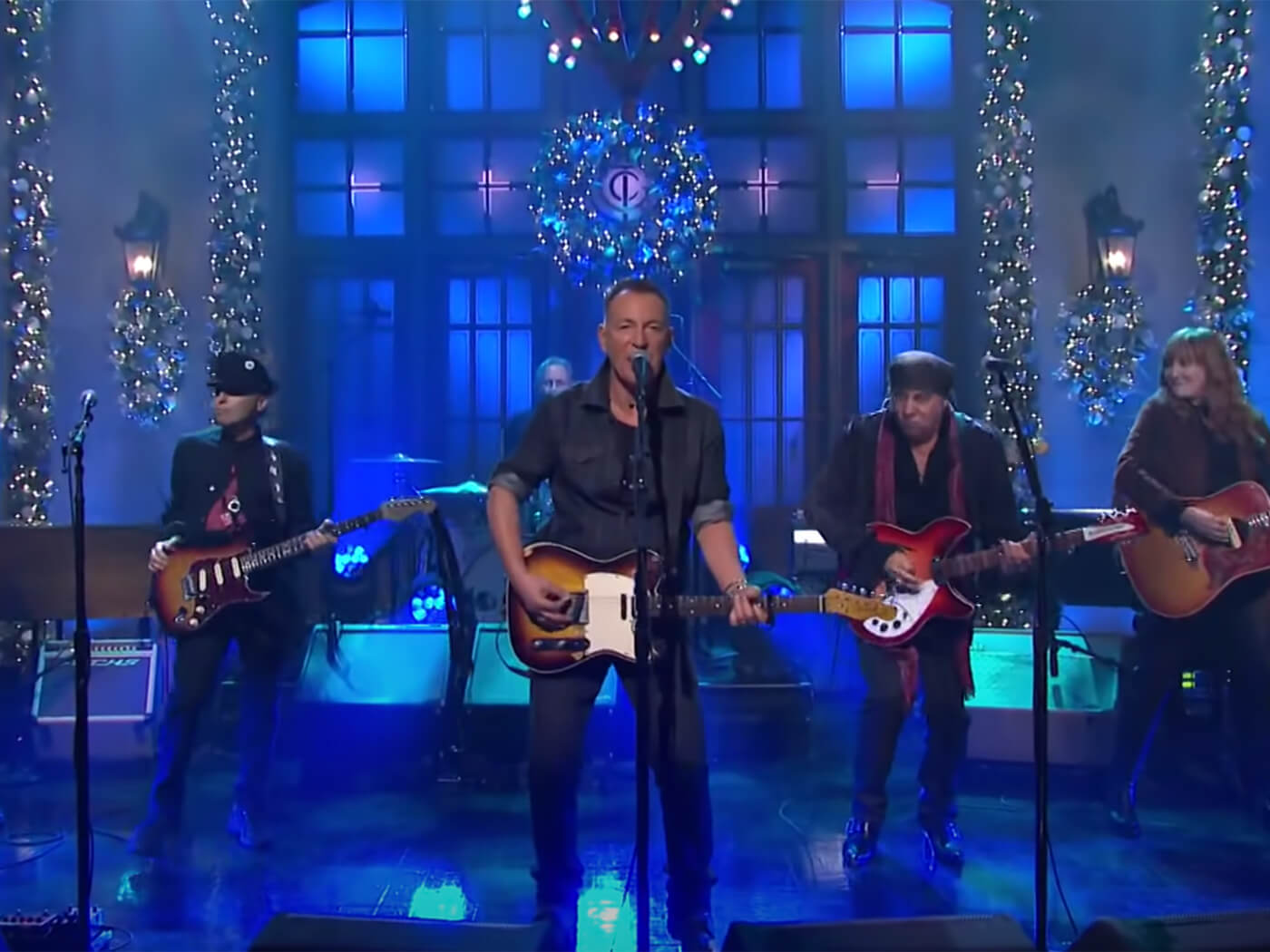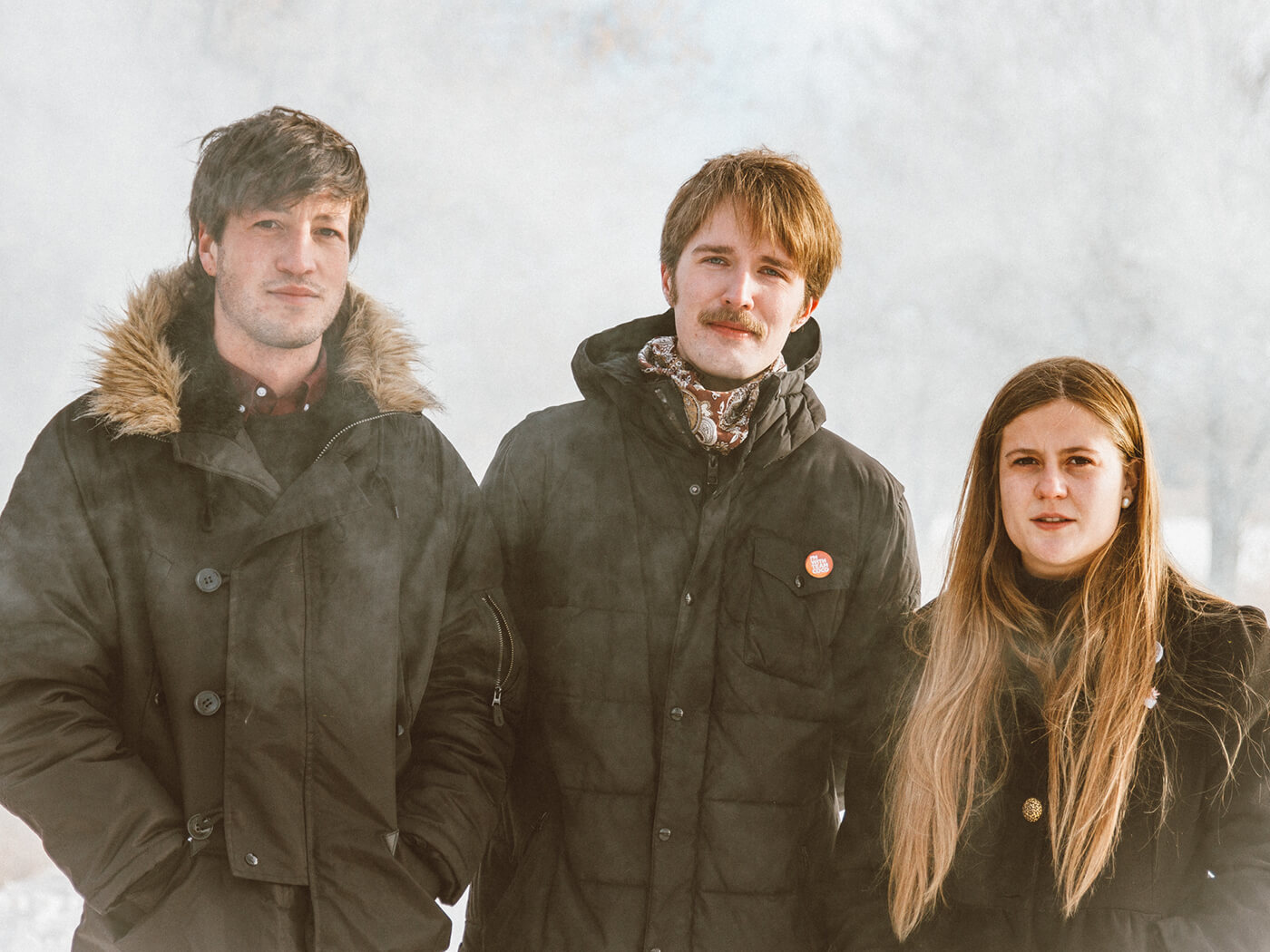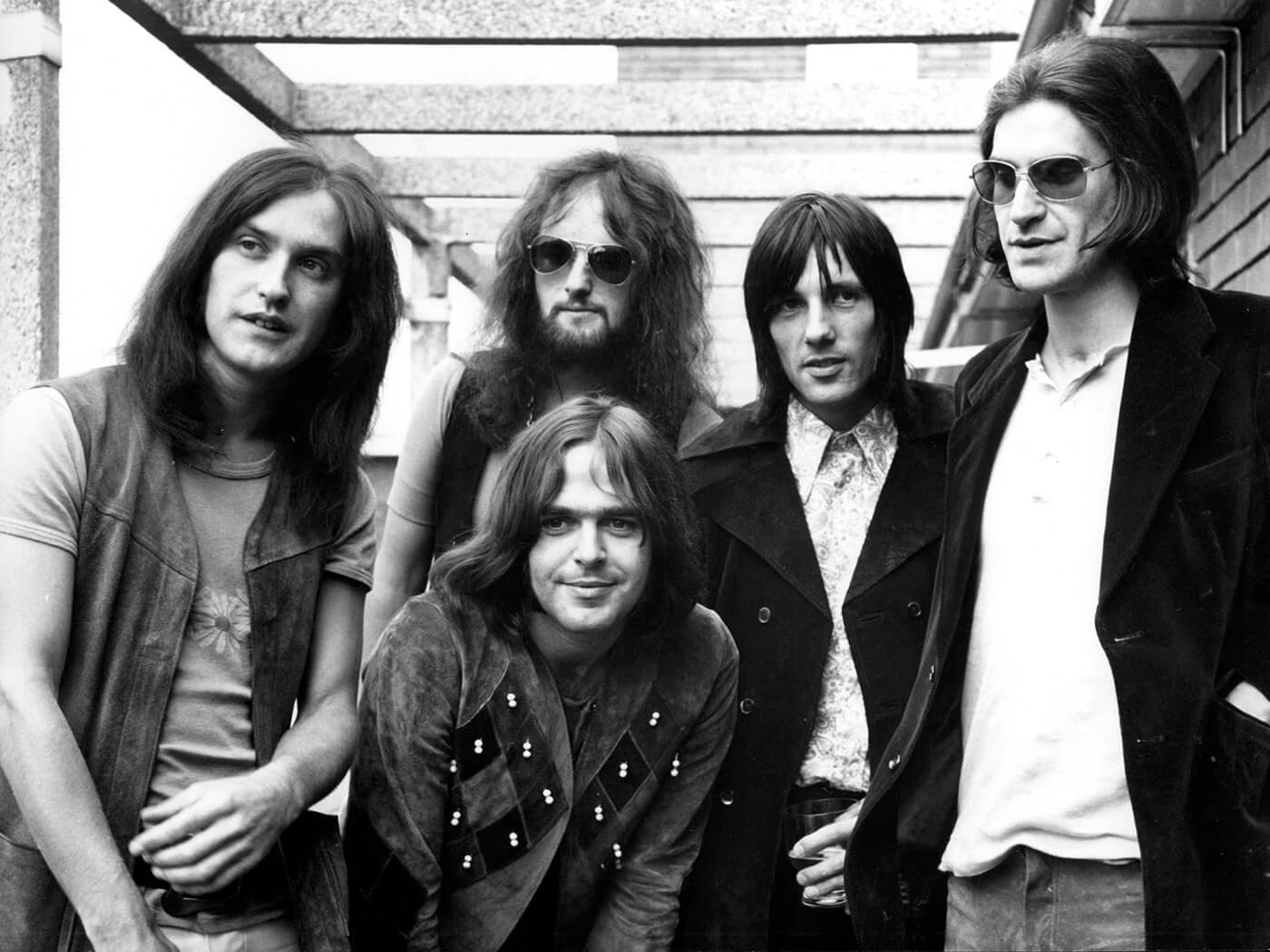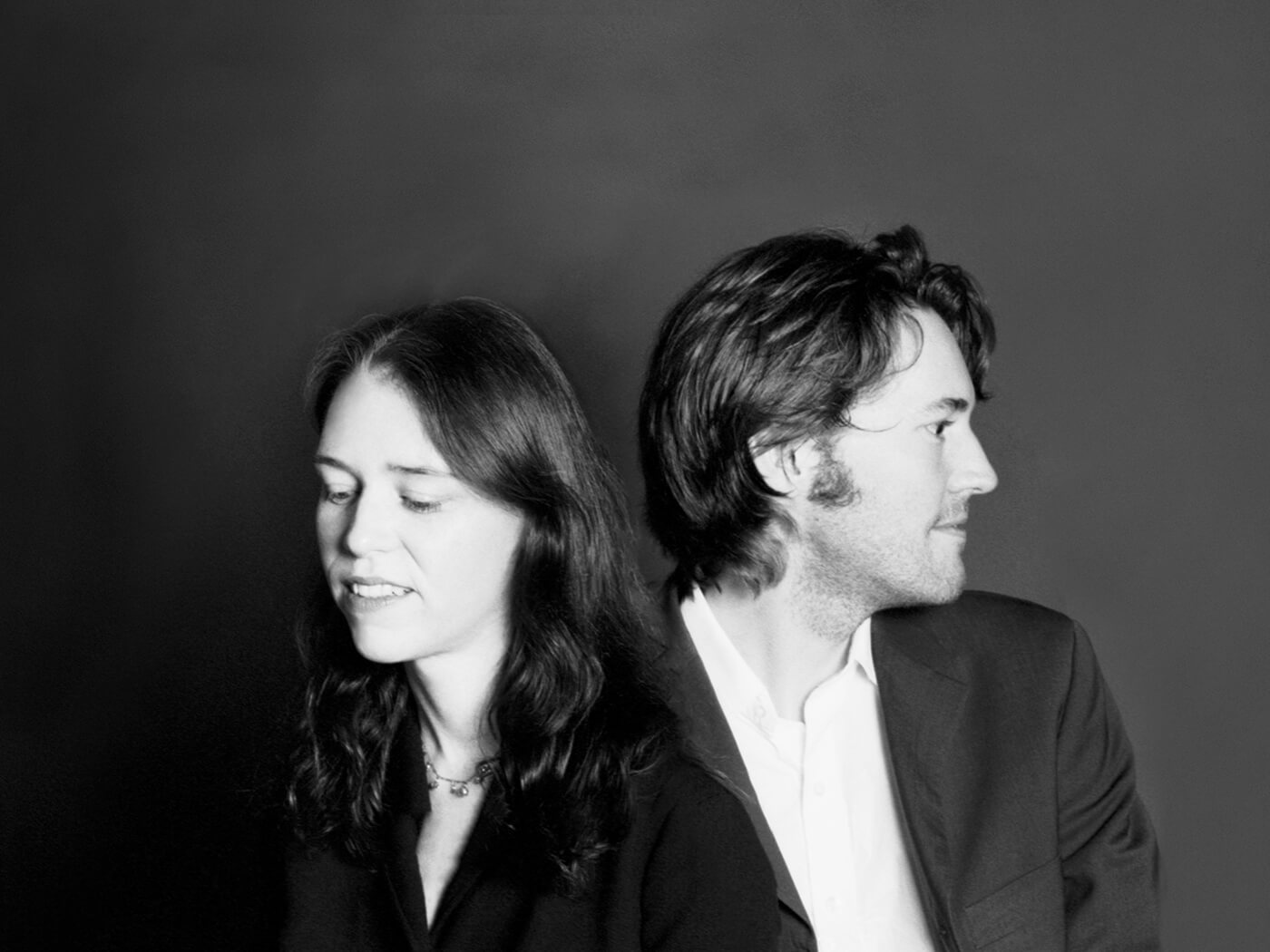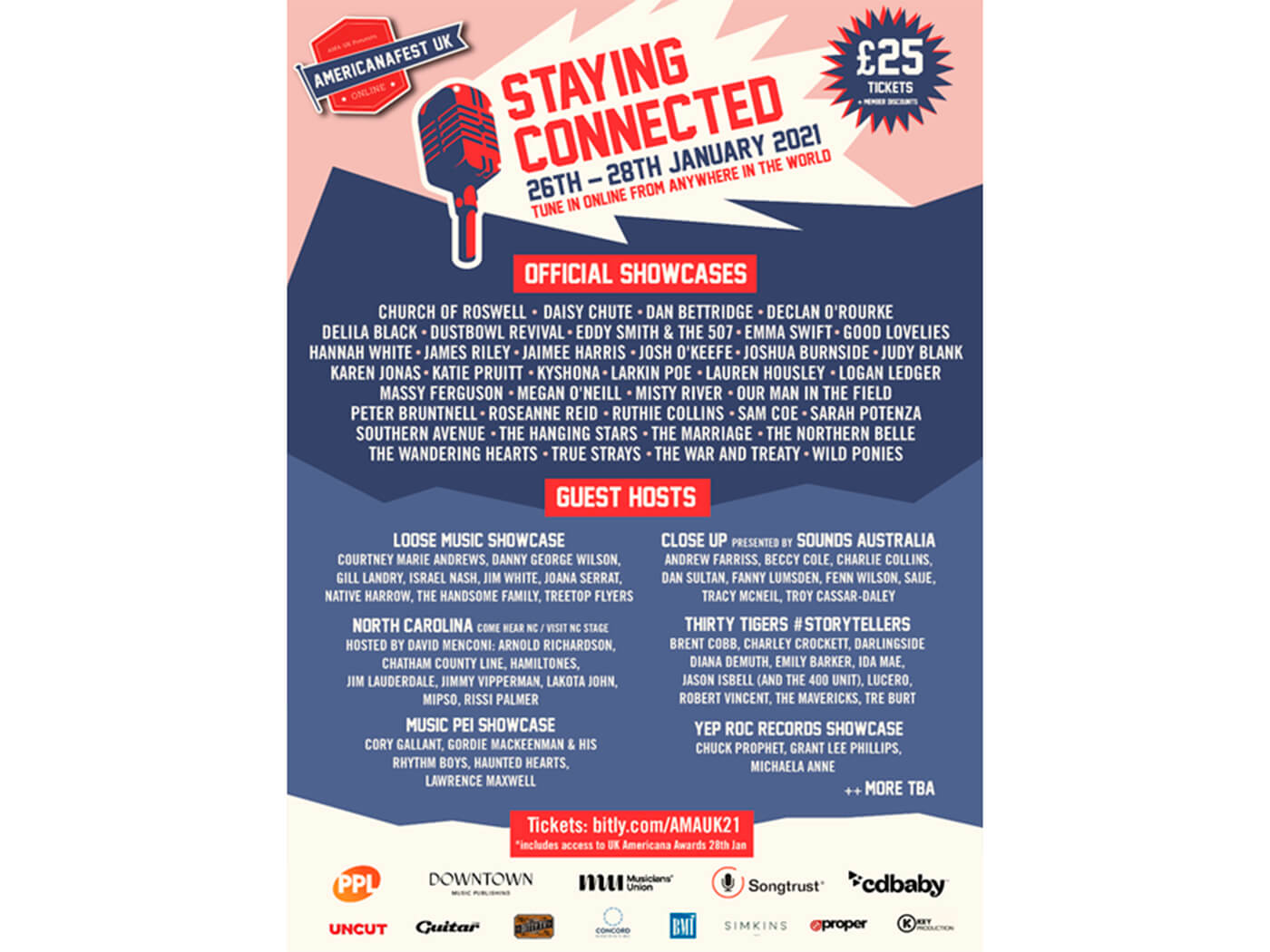50 MARGO PRICE
That’s How Rumors Get Started
LOMA VISTA
Recording in Hollywood with Sturgill Simpson in the producer’s chair, the Midwest farmer’s daughter tried her hand at a West Coast pop album for her third LP. Rather than country confessionals, then, here were 10 songs taking in Heartbreakers-esque new wave, gospel and prime Fleetwood Mac. Complete with a more oblique, lyrical voice from Price, the result was another step forward for a musician who respects tradition but has never been shackled by it.
49 GWENIFER RAYMOND
Strange Lights Over Garth Mountain
TOMPKINS SQUARE
A fearsome live performer, foregoing chat for instrumental acoustic guitar intensity, Gwenifer Raymond in 2020 made the album that gave recorded shape to her uncompromising approach. Grown in ambition, if not noticeably in length from her 2018 debut, Garth Mountain drew both on the rabbit skulls and damp moss of British folk horror, and also a compositional wisdom that broadened the horizon of her American Primitive twang.
48 THE NECKS
Three
ReR MEGACORP
Normally, The Necks appear to simply roll up to the studio, record an hour’s music, and roll out. For this entertaining and accessible album, the Australian acoustic improvising trio (“jazz” doesn’t get it somehow) split their work into three 20-minute compositions. “Bloom”, a rattling yet spacious noise, threw back to the mesmeric charms of their classic Drive By. “Lovelock” explored creepier post-industrial ambience, while “Further” again returned to a groovy, percussive chatter.
47 WORKING MEN’S CLUB
Working Men’s Club
HEAVENLY
Like LCD Soundsystem or Fat White Family before them, this Todmorden collective combine dance rhythms and post-punk awkwardness to fine effect. They were signed as a guitar band, but swiftly reconfigured for this, their debut, with some of its best tracks growing from frontman Sydney Minsky-Sargeant’s electronic demos. With Sheffield legend Ross Orton producing, the likes of “White Rooms And People” and “Valleys” suggested Mark E Smith collaborating with New Order.
46 ROGER & BRIAN ENO
Mixing Colours
DEUTSCHE GRAMMOFON
The brothers Eno have long exchanged music files, but it was only this year that the policy resulted in a full-length album. Obviously with this being an ambient album where all the tracks are named after naturally occurring colours, a part of you possibly imagines that this must be like listening to posh paint dry. In fact, it’s a lovely partnership that harmonises beautifully with recent Brian work – some of the reverberations familiar, but the tunes a pleasing set of frosted miniatures. A companion mini-album, Luminous, was also quietly radiant.
45 BRIGHT EYES
Down In The Weeds, Where The World Once Was
DEAD OCEANS
From the experimental opener “Pageturners Rag” to the gospel-tinged “Comet Song”, the trio’s first record since 2011’s The People’s Key recalled the opulent, unhinged creativity of their magnum opus, 2002’s Lifted…. Among these 14 tracks, there were electronic oddities (“Pan And Broom”), synthy new wave pop songs (“Mariana Trench”) and atmospheric piano ballads, the whole thing tied together by Conor Oberst’s playful, melancholic words.
44 EDDIE CHACON
Pleasure, Joy And Happiness
DAY END
Almost three decades after Charles & Eddie’s “Would I Lie To You?”, the duo’s surviving half returned with this masterful record of adventurous electronic R&B. It’s no grandstanding reappearance; rather, the mood is beautifully low-key, with keyboards warm and woozy, percussion subtle and mostly electronic, and Chacon’s voice tender and emotive. Underlining his status – that of a cult legend finally coming in from the cold – production came from John Carroll Kirby, collaborator with Frank Ocean and Solange.
43 SARAH DAVACHI
Cantus, Descant
LATE MUSIC
In 2020, Davachi offered strong private work from lockdown – her lo-fi “Gathers” cassette a set of site-specific works in progress – and two further EPs, but this album felt like it was the most substantial statement of her year. Geological of pace, these organ/keyboard drones were immersive in scale, contemplative in nature, and joined Davachi’s canon as a deeply empathetic work of haunting secular power. The singing was a new development, which hinted at new avenues to be explored – some of them Lynchian.
42 RÓISÍN MURPHY
Róisín Machine
SKINT/BMG
The former Moloko singer emerged as one of the heroes of lockdown, her exuberant living-room livestream – complete with impressively styled-out pratfall – putting other artists’ acoustic performances to shame. Subsequent album Róisín Machine felt like her definitive statement, a joyous update of classic disco and house manoeuvres, injected with maverick charisma and the emotion of hard-won experience.
41 KEELEY FORSYTH
Debris
THE LEAF LABEL
As an actor, Keeley Forsyth may be known to you from her appearances in popular dramas like TV’s Happy Valley. Her voice, centre stage in this startling collection of songs, will be less familiar. Powerful and individual, Debris is as otherworldly in sound as Anonhi, but as drawn irresistibly to craggy outcrops as that performer is to the dancefloor. Arranged for string section or discreet laptronics, Forsyth’s songs sit like statuary: starkly and impressively against
the landscape.
40 BRIGID DAWSON & THE MOTHERS NETWORK
Ballet Of Apes
CASTLE FACE
A sometime member of John Dwyer’s Oh Sees, Brigid Dawson delivered in July a solo debut that displayed some of that band’s enjoyment of antique sounds (deep reverbs, sedate organ) but pursued them into far quieter realms. A stately singer-songwriter album poised between folky, countrified and chamber modes, the album in its later stages (check out the title track) expanded out into a warm and reflective jazz.
39 THE PSYCHEDELIC FURS
Made Of Rain
COOKING VINYL
One of the year’s most welcome surprises, the Furs’ first studio album in 29 years was every bit as good as ’80s high points like Talk Talk Talk and Forever Now. Realising that radical reinvention at this point in the career may not be necessary, Made Of Rain brought into focus the band’s gifts for twin saxophone-and-guitar attack, impressionistic lyrics and the wonderfully sardonic delivery of frontman Richard Butler.
38 BONNY LIGHT HORSEMAN
Bonny Light Horseman
37d03d
Brought together by Justin Vernon and Aaron Dessner, this collaborative project from Anaïs Mitchell, Eric D Johnson, and Josh Kaufman reinterpreted the traditional songbook for our perilous times. Drawing from English, Irish and Appalachian folk music, the trio recast lover’s laments, war ballads and more as existential, eternal dramas, full of humanity and heartbreak. The trio’s spacious arrangements, harmony choruses and subtle embellishments amplified the songs’ emotional punch.
37 SPARKS
A Steady Drip, Drip, Drip
BMG
“So much now needs addressing,” sang Russell Mael on Sparks’s 24th album. “So much is depressing…” The brothers, unsurprisingly, took it upon themselves to set the world to rights on these 14 songs: their tongue-in-cheek targets included modern technology (“iPhone”), suburban obsessions (“Lawnmower”) and even poor Igor Fyodorovich (“Stravinsky’s Only Hit”). The warmth and humanity at the heart of the Maels’ work, not to mention their operatic, day-glo tunes, ensured that Drip stands as one of the duo’s recent high-water marks.
36 DESTROYER
Have We Met
DEAD OCEANS
Dan Bejar’s 13th album as Destroyer was his most accessible to date, polishing the plush synthpop of 2011’s Kaputt to a glimmering sheen. Lyrically, of course, it remained a postmodern puzzle – “a circus mongrel sniffing for clues” – but once you’d tuned into his frequency, Bejar revealed visions of apocalyptic dread and heart-rending poignancy, all wrapped up in the continuing belief that music is the one true religion, expressed via knowing winks to The Smiths and New Order.
35 SHABAKA & THE ANCESTORS
We Are Sent Here By History
IMPULSE!
Cementing his status as a modern-day jazz kingpin, this is Shabaka Hutchings’ third consecutive entry in Uncut’s annual Top 50, each with a different band. But whereas Sons Of Kemet and The Comet Is Coming pinned you to the wall with their kinetic intensity, this second team-up with South African ensemble The Ancestors was an earthy and solemn affair, Hutchings’ snaking sax providing an insistent counterpoint to Siyabonga Mthembu’s revolutionary poetry.
34 ROSE CITY BAND
Summerlong
THRILL JOCKEY
A solo project by Ripley Johnson from Wooden Shjips/Moon Duo, RCB have mapped the lesser-spotted genealogical link between the road music of German motorik, Canned Heat and trucker country. In this context, this year’s Summerlong felt like an agreeable rest stop, with lazy slide guitars and a nod to funk offsetting the moments – like the dust-kicking “Real Long Gone” –in which Johnson showed off some tidy Bakersfield chops.
33 BANANAGUN
The True Story Of Bananagun
FULL TIME HOBBY
Helmed by Nicholas Van Bakel, this Melbourne troupe are following the tropical psychedelic path hacked out by Caetano Veloso, Gal Costa and others. Their debut showed that they share a manic energy and restless creativity with their compatriots in King Gizzard & The Lizard Wizard, yet their influences also stretched to The Incredible String Band, Fela Kuti and Dorothy Ashby on the turbo-charged “People Talk Too Much” and acid-funk groover “Freak Machine”.
32 THE FLAMING LIPS
American Head
BELLA UNION
After a decade of experimentation, the Lips returned to more graceful, accessible songwriting on their 16th LP. Kacey Musgraves was along for the ride as the group examined what it means to be an ‘American band’; but the album truly succeeded because Wayne Coyne and Steven Drozd were looking back wistfully and openly on their teenage years and the troubles experienced by them and their wayward relatives. Their finest since Yoshimi…
31 AFEL BOCOUM
Lindé
WORLD CIRCUIT
“Our social security is music,” the singer-songwriter told Uncut earlier this year. “That’s all we’ve got left.” On perhaps his finest album, and something of a spiritual follow-up to his 1999 debut Alkibar, Bocoum summoned up Mali’s traditional music to call for unity in his troubled country. With Damon Albarn co-producing, though, it wasn’t all trad: there were electric guitars, Joan Wasser on violin and drumming from Tony Allen in oneof his final performances.
30 CORNERSHOP
England Is A Garden
AMPLE PLAY
Perfectly timed to deodorise an unpleasant waft of bad vibes across the nation, England Is A Garden was the best album in nigh on two decades from this perennially undervalued British institution. Tjinder Singh and Ben Ayers’ winning recipe for
lifting spirits involved a singular combination of flute funk, Punjabi folk and Bolan boogie, topped off with a jaunty ska singalong about racial profiling.
29 SONGHOY BLUES
Optimisme
TRANSGRESSIVE
With producer Matt Sweeney encouraging the band to up the tempos and power, Bamako’s greatest rock group hit hard on their stripped-down third album. The piledriving rhythms and distorted riffs, sometimes akin to Thin Lizzy jamming with Ali Farke Touré, were immediately thrilling, but the melodies and vocals ultimately proved more infectious; meanwhile, the translated lyrics showed Songhoy to be a positive and revolutionary force for change in Mali.
28 LUCINDA WILLIAMS
Good Souls Better Angels
HIGHWAY 20/THIRTY TIGERS
Although Williams returned to live in Nashville this year, her 14th studio album was anything but comfortable: here, recording live in the studio with her road band, the singer and songwriter was snarling and passionate, whether dressing down Trump on “Man Without A Soul” or searching for strength on the closing, seven-and-a-half-minute “Good Souls”, her voice earthier and more emotive than ever. 41 years on from her debut, Williams remains utterly compelling.
27 KEVIN MORBY
Sundowner
MARE/WOODSIST
Hard to imagine a more likeable singer-songwriter mode than that presented by Kevin Morby. On Sundowner, his horizontal and lightly-conceptual sixth, the sometime Woods man inhabits the croon of Nashville Skyline, the bibulous wisdom of Leonard Cohen, even (on “Wander”) the lilt of Kendrick Lamar – all while never endangering his own voice. This was calm and meditative guitar songwriting, quietly focused on the quiet bummer at its heart.
26 ROLLING BLACKOUTS CF
Sideways To New Italy
SUB POP
After the rush of their debut, Rolling Blackouts felt no inclination to slow down. Still dealing in brisk, melodic indie rock, instead the band deepened their impact: the lyrical touches in their suburban dramas more telling; the piling of melodies still more effective. Fran Kearney’s continuing ability to nail formative experience (“Cameo”, “Sunglasses At The Wedding”) grew in confidence, while guitarists Joe White and Tom Russo nailed their first classics.
25 NUBYA GARCIA
Source
CONCORD JAZZ
Acknowledged as a key instigator of the new UK jazz explosion, the Camden-born saxophonist finally got around to releasing her terrific solo debut this year after telling contributions to albums by Maisha, Nérija and others. Her generous, soulful tone already well-established, she set about exploring her Caribbean heritage, deftly folding in elements of dub, soca and cumbia.
24 MOSES SUMNEY
Græ
JAGJAGUWAR
Released in two parts in the first half of this year, Sumney’s second album left behind the muted, stripped-back feel of
his 2017 debut, Aromanticism, for a bold, maximalist explosion of colour. Spanning 20 songs, and featuring contributions from Daniel Lopatin, James Blake and Jill Scott, Græ found Sumney impressively combining his stellar vocals with explosive electronics, avant-garde textures, orchestral and jazz arrangements and moody funk.
23 PAUL WELLER
On Sunset
ISLAND
If the Weller of 2018 continued to draw strength, in his own way, from English folk traditions, string arrangements and what we might call “the Nick Drake vibe”, this year’s model cast the net far wider. Oh yes, there was still “Ploughman”, an oo-arrr Ronnie Lane romp, but elsewhere Wellers past and future collided as he investigated funk and soul, even (on tunes like the great “More”) German motorik. Staunch.
22 FIONA APPLE
Fetch The Bolt Cutters
EPIC/CLEAN SLATE
Eight years after The Idler Wheel…, Apple returned with this loose and magnificent fifth album. With much of it recorded by Apple herself at her Venice Beach home, and featuring copious percussion and the barking of her beloved dogs, …Bolt Cutters was raw and emotive; like, say, Lennon’s Plastic Ono Band, that rough setting proved to be the perfect backdrop for Apple’s dynamic voice and her compelling songs of struggle and hope.
21 JAMES ELKINGTON
Ever-Roving Eye
PARADISE OF BACHELORS
The Chicago-based English guitarist has, like his friend Joan Shelley, found new areas to explore in that most over-mined tradition, acoustic singer-songwriting. On his second solo album, assisted by the likes of Spencer Tweedy and The Weather Station’s Tamara Lindeman, Elkington mixed the swinging picking of Nick Drake and John Renbourn with his own wry and subtle musings. The title track, meanwhile, introduced dronier, more psychedelic leanings.
20 BRUCE SPRINGSTEEN
Letter To You
COLUMBIA
Back with the E Street Band for the first time on record since 2014, Letter To You was – in Steve Van Zandt’s words – “the fourth part of an autobiographical summation of [Springsteen’s] life”, after his memoir, the Broadway show and Western Stars album. The dominant themes here were faith, music and comradeship – delivered in euphoric, stadium-sized chunks by his reinvigorated cohorts. The addition of three previously unrecorded early-’70s songs neatly emphasised the ongoing nature of Springsteen’s musical mission.
19 BRIGID MAE POWER
Head Above The Water
FIRE
Since her 2016 debut, I Told You The Truth, Power has been combining folk music with defiant, confessional songwriting and haunting, musical drones. For her third album, the addition of a modest-sized band brought warmth and extra texture to her songs, blending elements of jazz, country and even psychedelia with her voice – otherworldly, hypnotic and as powerfully transcendent as ever.
18 FRAZEY FORD
U Kin B The Sun
ARTS AND CRAFTS
As a songwriter, the former Be Good Tanya has built upon her intimate version of Southern soul, investing U Kin B The Sun with sun-lit piano-driven grooves and a folk-country lilt. Although this album came freighted with Ford’s personal emotions – the death of her brother, her fractious relationship with her parents, break-ups – her positivity endured. “There is beauty in this world/So hold it any way you know how,” she sang. Amen.
17 SAULT
Untitled (Black Is)
FOREVER LIVING ORIGINALS
Having released two intriguing albums in 2019, the anonymous neo-soul collective – believed to include Michael Kiwanuka collaborator Dean “Inflo” Josiah, plus vocalists Cleo Sol and Melissa “Kid Sister” Young – really seized the day with this urgent 20-track opus, written in response to the killing of George Floyd and released just three weeks later on the Juneteenth holiday. A multifaceted work of elegant defiance, they followed it up in September with the equally essential Untitled (Rise).
16 STEPHEN MALKMUS
Traditional Techniques
DOMINO
“Top of the bill in Blackpool/Come and see us shred…” The eighth Malkmus album drew deeply and delightfully on some of his own traditional techniques: chiefly wry observation. Elsewhere, though, it curated a virtual festival in British folk-rock circa 1969/70. 12-string guitars, flute and nods to Eastern modes gave the whole a slightly dank Led Zeppelin III vibe that was customarily deadpan and irresistible.
15 FONTAINES DC
A Hero’s Death
PARTISAN
After the bright promise of their debut, the Dublin band’s second album showed a darker flowering of their talents into a rowdy and percussive post-punk. Kudos then to hyperactive FDC singer Grian Chatten – the romantic hero of this particular drama – in particular for locating the melodies that would turn this reverberating guitar abstraction into something epic and memorable.
14 COURTNEY MARIE ANDREWS
Old Flowers
LOOSE/FAT POSSUM
Having spent half a lifetime crafting elegant and delicate songs, the prolific Andrews reached a creative peak with Old Flowers, her seventh album. Ostensibly a break-up record – “you can’t water old flowers” – Andrews delivered her ruminations on lost love against a backdrop of gospel-inflected country-soul. Her message was forgiveness and compassion, delivered with understated grace, her voice moving elegantly from zen-like acceptance to trembling tenderness.
13 TAME IMPALA
The Slow Rush
WARP
Kevin Parker’s journey from slacker guitar burnout to laptop Brian Wilson has been one of the stranger and more enthralling stories of the last decade or so. The first Tame Impala album for five years found Parker almost precisely halfway between Air (1970s soft-rock tunes and diaphanous atmospheres) and Daft Punk (buzzing noises, driving beats). Soft to the touch sonically, the sweetness of the tunes helped the Frank Ocean-style confessionals at Parker’s sad disco slip down even easier.
12 MOSES BOYD
Dark Matter
EXODUS
The title’s double meaning – reflecting Moses Boyd’s interest in both astronomy and the plight of the African diaspora – also alluded to an intriguing duality in the music. Boyd is a producer as well as a virtuoso jazz drummer, and the Mercury-nominated Dark Matter expertly combined fiery live takes with programmed beats and synthy atmospherics. The result sometimes brought to mind ’80s Miles Davis or Jeff Mills’ recent EP with Tony Allen, but with a distinct London edge that tilted towards UK garage and broken beat.
11 JASON ISBELL
Reunions
SOUTHEASTERN
Now seven albums into his solo career, Isbell continued the purple patch that began on 2013’s Southeastern with what might be his richest, subtlest album to date. His loyal group The 400 Unit played a blinder, their performances funky and spacious on opener “What’ve I Done To Help” and sensitive on the atmospheric “River” and “St Peter’s Autograph”; yet it’s Isbell’s songs, both politically and emotionally aware, that were the real jewels here.
10 LAURA MARLING
Song For Our Daughter
CHRYSALIS/PARTISAN
After her exploratory Lump project with Tunng’s Mike Lindsay, Marling tiptoed back to a sort of classicism for her seventh record: while influences include Leonard Cohen on “Alexandra” and Paul McCartney on “Blow By Blow”, the stately sophistication of these 10 songs was testament to Marling’s talents alone. There were no reinventions here, just the songwriter stripped back to the essence of her art.
9 SHIRLEY COLLINS
Heart’s Ease
DOMINO
Eighty-five years young, England’s greatest living folk singer here truly regained the voice that sat dormant for decades, making a record that stood up to her late-’60s and early-’70s marvels. Collins is still an adventurer, too: she tried out a few songs written by her nephew and ex-husband alongside the trad.arr tunes, while the closing “Crowlink” bravely placed her among field recordings and experimental electronic drones.
8 JARV IS…
Beyond The Pale
ROUGH TRADE
Forming a bona fide band for the first time since Pulp’s dissolution in 2002 clearly reinvigorated Jarvis Cocker. On this debut LP, he and his group – including Serafina Steer and Jason Buckle – presented seven epic songs that touched on krautrock, house and dub, and were developed and recorded at live gigs over the past couple of years. Above it all, Cocker examined our cave-dwelling past, the curse of nostalgia and the detritus of broken lives on some of his deepest lyrics.
7 BILL CALLAHAN
Gold Record
DRAG CITY
Many of Callahan’s albums seem to come with difficult labours, but Gold Record, his second album in two years, almost waltzed in, feeling fresh and natural. It’s been an organic transition for the songwriter, now very much the settled and happy family man, and though some may pine for that tortured misanthrope of the Smog years, the likes of “Pigeons”, “Ry Cooder” and “As I Wander” were pinnacles of wry wisdom and storytelling.
6 WAXAHATCHEE
Saint Cloud
MERGE
Sobriety brought Katie Crutchfield back to her Americana roots on this, her fifth album. Like Lucinda Williams, one of her inspirations, here she filtered country through a gnarlier indie lens, singing of her struggles with recovery, growing up and relationships. Eventually, on “Witches”, a lilting, harmony-laden highlight of this subtly phenomenal record, Crutchfield discovered that the struggle is the point of it all.
5 THUNDERCAT
It Is What It Is
WARP
Bass virtuoso and Kendrick veteran Stephen Bruner continued his journey into the furthest reaches of exploded fusion. Seeming to chronicle the boom-bust cycle of a love affair, his fourth album was composed of short pieces (the better, perhaps, to accommodate busy electronica, hard ’70s grooves and sweet soft rock) but visionary and unified in scope, floating on Thundercat’s falsetto and the sweetly candid nature of his lyrics. Joining him on the mind-expanding mission were guest stars Steve Arrington and the idiosyncratic rapper Lil B.
4 DRIVE-BY TRUCKERS
The New OK
ANTI-
Events in 2020 moved so fast that the year needed two Drive-By Truckers albums to tackle them all: The Unraveling in late January and The New OK in December. Both albums were full of fury about the state of America, addressing school shootings, the demonisation of immigrants, the opioid addiction and sundry madness from the American Scream. Following 2016’s American Band, Drive-By Truckers have gone from being a great band to an important one: we need them now, more than ever.
3 PHOEBE BRIDGERS
Punisher
DEAD OCEANS
The finest songwriters develop their own singular voice, and Los Angeles’ Phoebe Bridgers has certainly done that in the six years since her first single. Like, say, Bill Callahan or frequent collaborator Conor Oberst, her musings on sex and death flow organically but with a rare power and playfulness. Her second album Punisher was her strongest work to date, the hallucinatory mix of electronics and eerie chamber folk propelling highlights such as the title track, “Chinese Satellite” and “Moon Song”.
2 FLEET FOXES
Shore
ANTI-
A wonderful surprise, not just because of its sudden appearance on the autumn equinox, but because Robin Pecknold sounded like a man reborn, matching the wide-eyed folksy innocence of the Fleet Foxes’ classic debut to gleaming pop production. Despite lyrics touching on isolation, depression and loss – “Sunblind” paid tribute to Richard Swift, David Berman and others very much missed – Shore was relentlessly sunny and optimistic, a celebration of nature both wild and human.
1 BOB DYLAN
Rough And Rowdy Ways
COLUMBIA
If nothing else, 2020 has proven how resilient music can be. Despite the vicissitudes of the pandemic, hearteningly, good music has found a way to endure – on record at least. As our poll demonstrates, our team of writers have zoned in on the rich seam of creativity running through 2020, finding comfort in familiar friends like Fleet Foxes, Bill Callahan, Drive-By Truckers (twice), Stephen Malkmus and Paul Weller while also searching diligently for the new and innovative: Sault, Nubya Garcia, Sarah Davchi and Bananagun among them. Some songwriters have released their best records yet – Frazey Ford, Brigid Mae Power, Courtney Marie Andrews, Phoebe Bridgers – while artists who we considered newcomers just a short while ago, such as Fontaines DC, Margo Price and Shabaka Hutchings, have settled themselves firmly at our top table.
It is, perhaps, no surprise that the artist who defined 2020 for us was Bob Dylan – hitting the No 1 spot for a record-setting third time in our Albums Of The Year. Heralded by “Murder Most Foul” in March – an elegiac, 17-minute song ostensibly about the assassination of John F Kennedy – Rough And Rowdy Ways was a ferocious, urgent, marauding album that felt almost supernaturally relevant to the present. Arguably, of course, Dylan’s most prized albums have always arrived at fraught moments. But with this, his 39th studio album, he seemed to have found new, invigorating ways of illuminating American history and reflecting it against the present day. The ghosts of the 20th century – Buster Keaton, Walt Whitman and General Patton among them – coexisted with spirits from earlier civilisations, all of whom had something to say, in their own oblique ways, about today. Dylan’s point? History is cyclical; societies emerge, flourish, decline. Not bad going, then, for a man last seen peddling his own brand of whiskey.
What Rough And Rowdy Ways ultimately demonstrated, though, was Dylan’s continuing capacity – as he approaches his 80th birthday – to confound and delight us. Who else is there, this far into their careers, who has that ability? A remarkable achievement; a remarkable album. “The last of the best/ You can bury the rest”, he sang on “False Prophet”. He wasn’t far off.


